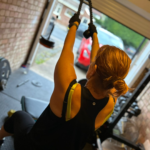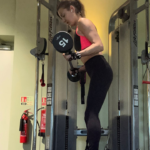
- Posted by Hannah
- September 16, 2024
Understanding RED-S and LEA: The Hidden Risks for Female Athletes
As a female personal trainer and someone passionate about empowering women in fitness, I’m deeply committed to helping my clients achieve their athletic goals. However, there’s a growing concern in the athletic community that needs more attention—Relative Energy Deficiency in Sport (RED-S) and Low Energy Availability (LEA). These conditions don’t just affect performance; they can have significant health implications, especially for women. Understanding these risks is essential for anyone serious about training and competing at their best.
What is RED-S?
RED-S stands for Relative Energy Deficiency in Sport. It’s a syndrome that occurs when an athlete’s energy intake is insufficient to meet the energy demands required for health, daily living, and training. In simpler terms, it’s when you’re not eating enough to fuel your body’s needs, leading to a cascade of negative effects on both health and performance.
Understanding LEA (Low Energy Availability)
Low Energy Availability (LEA) is the underlying cause of RED-S. LEA happens when there isn’t enough energy (calories) left for your body to maintain basic physiological functions after accounting for the energy expended during exercise. It’s important to note that LEA can occur in anyone, regardless of gender, but it poses unique challenges for women due to the impact on menstrual health and bone density.
The Impact of RED-S and LEA on Training and Performance
Decreased Performance
One of the most immediate effects of RED-S is a decline in athletic performance. When your body doesn’t have enough energy, it starts to prioritize essential functions—keeping you alive—over performance. This means you might experience reduced endurance, strength, and speed. Training feels harder, and recovery takes longer. Over time, this can lead to a plateau in performance or even regression.
Increased Injury Risk
Low energy availability compromises bone health, making female athletes more prone to stress fractures and other bone-related injuries. Additionally, muscle weakness, poor coordination, and decreased reaction times—all consequences of inadequate fuelling—further increase the risk of injuries during training and competition.
Menstrual Dysfunction
One of the most telling signs of RED-S in women is menstrual dysfunction. This can range from irregular periods to complete cessation (amenorrhea). Menstrual health is a key indicator of overall health in women, and disruptions here can indicate serious underlying issues related to energy deficiency.
Compromised Bone Health
The combination of low oestrogen levels (due to menstrual dysfunction) and inadequate calcium intake can lead to decreased bone mineral density. This not only increases the risk of fractures but also sets the stage for osteoporosis later in life. For young female athletes, this is a significant concern, as peak bone mass is typically reached in the late twenties.
Immune Function and Illness
A body in a state of low energy availability is less equipped to fend off illness. You might find yourself catching colds more often, or taking longer to recover from them. This is because your immune system requires energy to function optimally, and when energy is in short supply, it’s one of the first systems to be compromised.
Psychological Effects
The physical stress of RED-S often accompanies psychological stress. Feelings of fatigue, irritability, and even depression can arise. Additionally, the pressure to maintain a certain body image or weight can exacerbate disordered eating behaviours, creating a vicious cycle that’s hard to break.
Prevention and Recovery
Preventing and recovering from RED-S starts with awareness and education. Here are some key steps:
- Adequate Nutrition: Focus on a balanced diet that meets your energy needs. This includes carbohydrates for energy, protein for muscle repair, and fats for hormone production. Don’t shy away from eating enough—your body needs it.
- Listen to Your Body: If you’re feeling excessively fatigued, struggling with your menstrual cycle, or noticing a drop in performance, it’s time to reassess your training and diet. These are not signs of weakness; they’re your body’s way of telling you something is wrong.
- Work with Professionals: Consider working with a sports dietitian or nutritionist who understands the demands of your sport and can help you create a nutrition plan that supports both your health and performance goals.
- Monitor Menstrual Health: Keep track of your menstrual cycle. Any irregularities can be an early warning sign of RED-S. If you notice changes, consult with a healthcare provider who understands the unique needs of female athletes.
- Recovery is Key: Ensure that you’re giving your body enough time to recover between workouts. This includes getting enough sleep, eating appropriately, and avoiding excessive training loads.
Final Thoughts
As women, our bodies are powerful and resilient, but they also have unique needs that must be respected. RED-S and LEA are serious conditions that can derail even the most dedicated athlete. By understanding these risks and taking proactive steps to fuel your body correctly, you can continue to train hard, perform well, and most importantly, maintain your long-term health.
Remember, health and performance go hand in hand. Taking care of your body through proper nutrition and recovery is not only essential for reaching your athletic goals but also for ensuring that you can enjoy the benefits of an active lifestyle for years to come.




